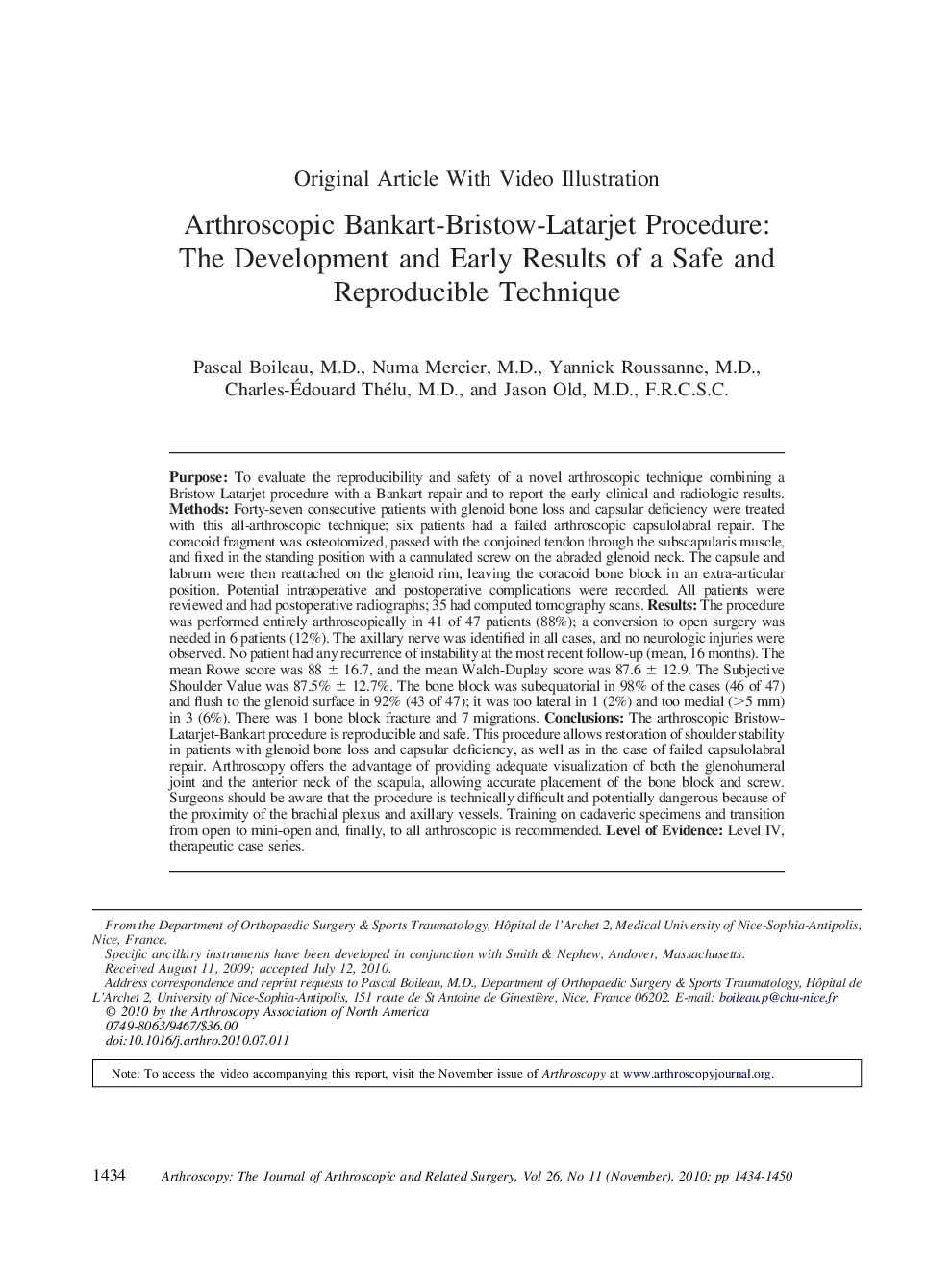| Article ID | Journal | Published Year | Pages | File Type |
|---|---|---|---|---|
| 4045048 | Arthroscopy: The Journal of Arthroscopic & Related Surgery | 2010 | 17 Pages |
PurposeTo evaluate the reproducibility and safety of a novel arthroscopic technique combining a Bristow-Latarjet procedure with a Bankart repair and to report the early clinical and radiologic results.MethodsForty-seven consecutive patients with glenoid bone loss and capsular deficiency were treated with this all-arthroscopic technique; six patients had a failed arthroscopic capsulolabral repair. The coracoid fragment was osteotomized, passed with the conjoined tendon through the subscapularis muscle, and fixed in the standing position with a cannulated screw on the abraded glenoid neck. The capsule and labrum were then reattached on the glenoid rim, leaving the coracoid bone block in an extra-articular position. Potential intraoperative and postoperative complications were recorded. All patients were reviewed and had postoperative radiographs; 35 had computed tomography scans.ResultsThe procedure was performed entirely arthroscopically in 41 of 47 patients (88%); a conversion to open surgery was needed in 6 patients (12%). The axillary nerve was identified in all cases, and no neurologic injuries were observed. No patient had any recurrence of instability at the most recent follow-up (mean, 16 months). The mean Rowe score was 88 ± 16.7, and the mean Walch-Duplay score was 87.6 ± 12.9. The Subjective Shoulder Value was 87.5% ± 12.7%. The bone block was subequatorial in 98% of the cases (46 of 47) and flush to the glenoid surface in 92% (43 of 47); it was too lateral in 1 (2%) and too medial (>5 mm) in 3 (6%). There was 1 bone block fracture and 7 migrations.ConclusionsThe arthroscopic Bristow-Latarjet-Bankart procedure is reproducible and safe. This procedure allows restoration of shoulder stability in patients with glenoid bone loss and capsular deficiency, as well as in the case of failed capsulolabral repair. Arthroscopy offers the advantage of providing adequate visualization of both the glenohumeral joint and the anterior neck of the scapula, allowing accurate placement of the bone block and screw. Surgeons should be aware that the procedure is technically difficult and potentially dangerous because of the proximity of the brachial plexus and axillary vessels. Training on cadaveric specimens and transition from open to mini-open and, finally, to all arthroscopic is recommended.Level of EvidenceLevel IV, therapeutic case series.
